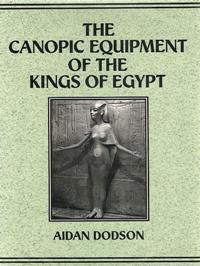| Main » Ad Board » ДРЕВЕН ЕГИПЕТ И АФРИКА » Археология |
| 19.09.2019, 14:51 | |
Канопите са ритуални съдове, свързани с древноегипетските погребални обреди. Изработени са от алабастър, по-рядко са керамични. В тях се съхраняват вътрешностите на мумифицирания покойник (без сърцето, което остава в мумията, тъй като се вярва, че е вместилище на душата). Започват да се изработват от времето на Старото царство, използването им се преустановява към края на Късното или през епохата на Птолемеите. Aidan Dodson - The canopic equipment of the kings of Egypt, London, Kegan Paul International, 1994 АЛТЕРНАТИВЕН ЛИНК / ALTERNATIVE LINK: Aidan Dodson - The canopic equipment of the kings of Egypt, London, Kegan Paul International, 1994 АЛТЕРНАТИВЕН ЛИНК / ALTERNATIVE LINK: Aidan Dodson - The canopic equipment of the kings of Egypt, London, Kegan Paul International, 1994 - на английски език, от Google Docs,формат PDF. Сваляне с ляв бутон (downloading by left button) от страницата на предоставящия сървър, после през бутона стрелка надолу/after by down arrow button.
| |
| Views: 1701 | Placed till: 19.12.2021 | Rating: 4.0/1 | |

